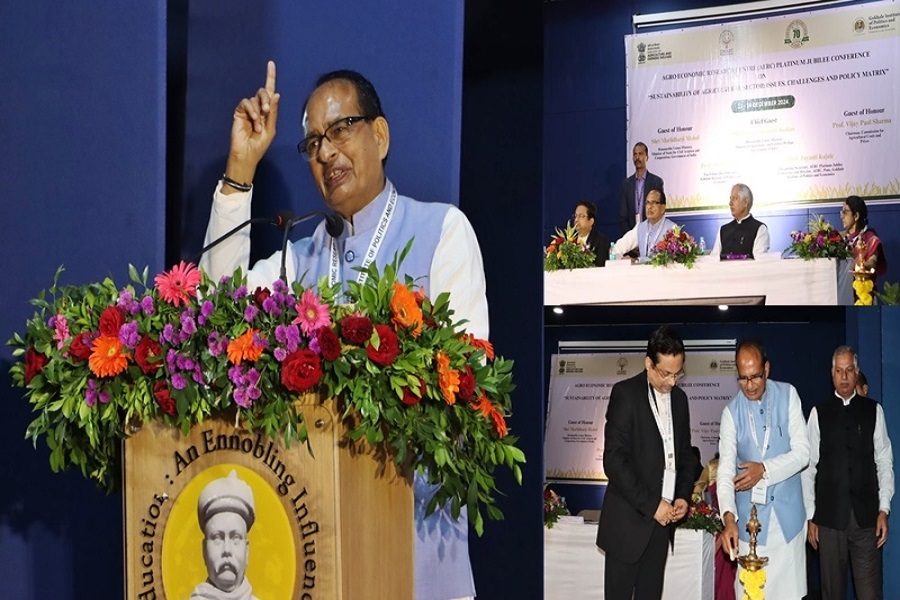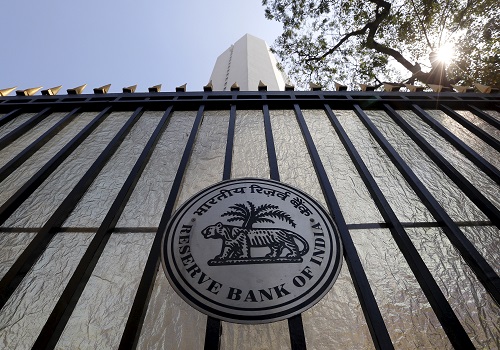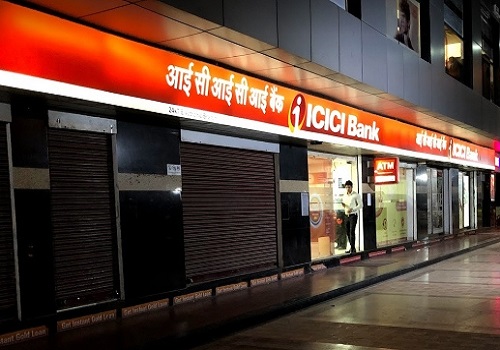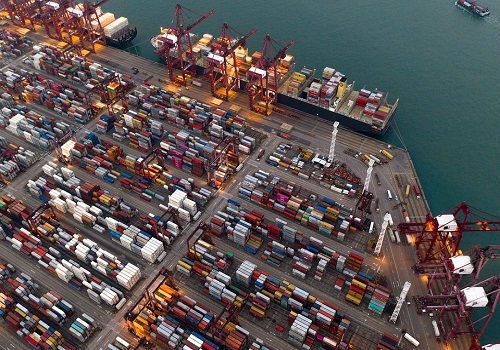Agri Commodity Technical Report 19 April 2024 - Geojit Financial Services Ltd

Follow us Now on Telegram ! Get daily 10 - 12 important updates on Business, Finance and Investment. Join our Telegram Channel
* India's oilmeal exports in March fell 31% on year to 395,382 tn, according to data released by The Solvent Extractors' Association of India on Wednesday. The overall oilmeal exports in March fell owing to a drop in exports of soybean, mustard, and castor seed. Exports of soymeal in March fell to 198,928 tn from 235,233 tn a year ago. However, for Apr-Mar, soymeal exports revived and were at 2.13 mln tn compared to 1.02 mln tn during the same period a year ago. This is because price of Indian soybean was the most competitive in the international market, SEA said in a press release. In March, exports of mustard meal fell to 173,589 tn from 248,063 tn a year ago. Similarly, exports of castor seed meal fell to 22,865 tn from 39,710 tn a year ago, the SEA said. For Apr-Mar, total oilmeal exports rose 13% to 4.89 mln tn, the data showed. "This is highest export of oilmeals since 2013-14 in terms of quantity and value," SEA said. In the same period, mustard meal exports fell slightly to 2.21 mln tn from 2.29 mln tn a year ago. The export of rapeseed in March is more or less the same compared to last year during the same period. "The export sale of rapeseed meal has slowed down pronouncedly of late owing to growing competition from soymeal in the world market," the association said. In Apr-Mar, 1.63 mln tn oilmeal was exported from the Kandla port, against 1.23 mln tn a year ago, and a total of 1.45 mln tn was exported from the Mundra port compared with 1.36 mln tn in the year ago period, according to SEA report. During the same period, exports from Jawaharlal Nehru Port Trust in Mumbai rose to 435,061 tn from 405,776 tn a year ago, the association said. Around 111,043 tn oilmeal was shipped from the Kolkata port, compared with 417,339 tn a year ago, and 1.25 mln tn from other ports compared with 928,360 tn in the same period last year, the association said. During AprMar, India's oilmeal exports to Bangladesh jumped 57.3% on year to 892,659 tn, while those to Vietnam fell 59.2% to 421,372 tn, the data showed. Oilmeal exports to South Korea were at 832,069 tn, lower than 914,433 tn a year ago, the data showed. "Iran has turned out to be largest importer of soybean meal from India (including shipment via Dubai) and imported a record quantity of soybean meal of 8.64 lakh tonnes (864,000 tn) during the financial year 2023-24," SEA report said. In the case of rice bran meal, there were no exports from India in March compared with 51,770 tn exported in the corresponding period a year ago, according to the data. "The ban on exports persisting rice bran processors in eastern India are now confronted with the looming threat of shutting down their operations," the SEA said. The export of de-oiled rice bran during Apr-Jul 2023 was reported at only 152,000 tn, the association added.
* Southwest monsoon rains, seen crucial for the Indian economy, are likely to kick off the season on a weak note due to the persisting El Nino phenomenon, but will catch up during the four months ending September riding the favourable La Nina, says private weather forecaster Skymet's President G.P. Sharma. In what bodes to be good news for the agrarian sector, the spatial distribution of rainfall over India is likely to be better than last year, says Sharma.
* India received 9.0 mm of rainfall in the week ended Wednesday, 1% above the normal weighted average of 8.9 mm for the period, according to the India Meteorological Department. During the week, two regions received below-normal rainfall and rainfall in two regions was above normal. Rainfall in east and northeast India was 72% below normal at 7.0 mm, while northwest India received 79% above-normal showers at 14.0 mm, according to the data. In the central parts of the country, rainfall was 246% above normal at 7.6 mm during the week, while precipitation in the southern peninsula was 44% below normal at 5.0 mm. Of the 36 subdivisions, rainfall was "large deficient" in 15 subdivisions and deficient in four. Four subdivisions received excess showers and two received normal rainfall. There was no rainfall in two subdivisions, while rainfall was in "large excess" in nine subdivisions, the weather bureau said. Since Mar 1, India has received 43.5 mm of rainfall, 14% below the normal level of 50.4 mm for the period.
* The National Commodity and Derivatives Exchange has informed its members that the exchange will be closed on May 20 on account of General Elections in Mumbai. "Accordingly, the staggered delivery period for the contracts now expiring on May 17, 2024 shall commence from Monday, May 13, 2024. It may be further noted that the delivery intentions for the aforementioned contracts shall be accepted till 6:30 p.m. (1830 IST) on May 17, 2024,” it said in a circular dated Wednesday. Other exchanges such as NSE, BSE and MCX have already declared holiday on May 20.
* The area under summer crops in Maharashtra rose 13.6% on year to 384,424 ha, according to data from the state agriculture department. During the same period last year, summer crop acreage in the state was 338,375 ha. The average acreage for five years from 2016-17 to 2020-21 for summer crops in the state is 349,759 ha, the data showed. The total area under cereals rose to 279,175 ha from 249,756 ha a year ago. The acreage under rice, the second major summer crop, was at 167,703 ha, up from 163,853 ha a year ago. The state's five-year average acreage for rice is 83,011 ha. The area under maize fell to 47,809 ha from 48,145 ha a year ago. The area under pulses was at 10,717 ha, up from 8,622 ha a year ago. The area under moong rose to 9,381 ha from 6,983 ha a year ago, the data showed. Maharashtra is the third-largest producer of moong. Acreage under oilseeds rose to 94,532 ha from 79,996 ha a year ago, according to the data. Groundnut, the major summer crop, was sown across 69,042 ha, up from 53,599 ha a year ago. The five-year average acreage for the crop is 90,605 ha, the data showed. Soybean acreage plunged to 4,762 ha from 16,797 ha a year ago. As of today, the water level in the state's dams was 32.36% of the capacity, compared with 40.77% a year ago, according to data from the state water resources department.
For More Geojit Financial Services Ltd Disclaimer https://www.geojit.com/disclaimer
SEBI Registration Number: INH200000345












 320-x-100_uti_gold.jpg" alt="Advertisement">
320-x-100_uti_gold.jpg" alt="Advertisement">










